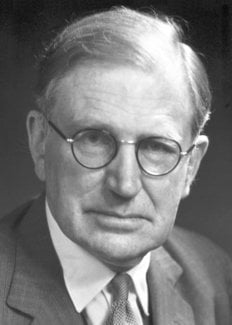Sir Nevill F. Mott
Biographical

Nevill Francis Mott was born in Leeds, U.K., on September 30th, 1905. His parents, Charles Francis Mott and Lilian Mary (née) Reynolds, met when working under J.J. Thomson in the Cavendish Laboratory; his great grandfather was Sir John Richardson, the arctic explorer. He was educated at Clifton College, Bristol and St. John’s College, Cambridge, where he studied mathematics and theoretical physics. He started research in Cambridge under R.H. Fowler, in Copenhagen under Niels Bohr and in Göttingen under Max Born, and spent a year as a lecturer at Manchester with W.L. Bragg before accepting a lectureship at Cambridge. Here he worked on collision theory and nuclear problems in Rutherford’s laboratory. In 1933 he went to the chair of theoretical physics at Bristol, and under the influence of H. W. Skinner and H. Jones turned to the properties of metals and semiconductors. Work during his Bristol period before the war included a theory of transition metals, of rectification, hardness of alloys (with Nabarro) and of the photographic latent image (with Gurney). After a period of military research in London during the war, he became head of the Bristol physics department, publishing papers on low-temperature oxidation (with Cabrera) and the metal-insulator transition.
In 1954 he was appointed Cavendish Professor of Physics, a post which he held till 1971, serving on numerous government and university committees. The research for which he was awarded the Nobel Prize began about 1965. Some of his main books are “The Theory of Atomic Collisions” (with H.S.W. Massey), “Electronic Processes in Ionic Crystals” (with R.W. Gurney) and “Electronic Processes in Non-Crystalline Materials” (with E.A. Davis).
Outside research in physics he has taken a leading part in the reform of science education in the United Kingdom and is still active on committees about educational problems. He was chairman of a Pugwash meeting in Cambridge in 1965. He was chairman of the board and is now president of Taylor & Francis Ltd., scientific publishers since 1798. He was Master of his Cambridge college (Gonville and Caius) from 1959-66. He was President of the International Union of Physics from 1951 to 1957, and holds more than twenty honorary degrees, including Doctor of Technology at Linkoping.
In 1930 he married Ruth Eleanor Horder. They have two daughters and three grandchildren, Emma, Edmund and Cecily Crampin.
For the last ten years he has lived in a village, Aspley Guise, next door to his son-in-law and family. During this period he has written an autobiography “A Life in Science” (Taylor and Francis) and edited a book with several authors on a religion-science interface “Can Scientists Believe?” (James and James, London), together with many scientific papers, mainly in the last 3 years on high-temperature superconductors.
This autobiography/biography was written at the time of the award and first published in the book series Les Prix Nobel. It was later edited and republished in Nobel Lectures. To cite this document, always state the source as shown above.
Sir Nevill F. Mott died on August 8, 1996.
Nobel Prizes and laureates
Six prizes were awarded for achievements that have conferred the greatest benefit to humankind. The 14 laureates' work and discoveries range from quantum tunnelling to promoting democratic rights.
See them all presented here.
